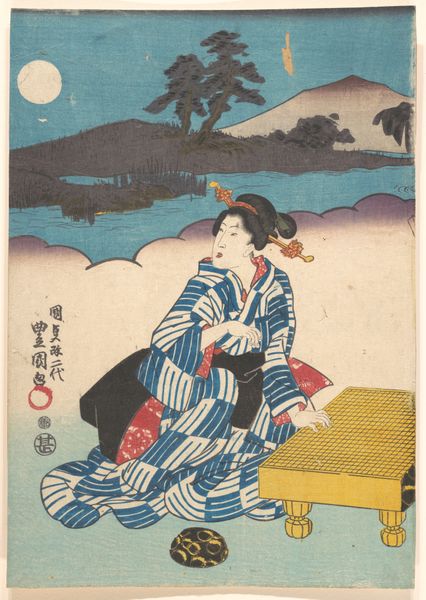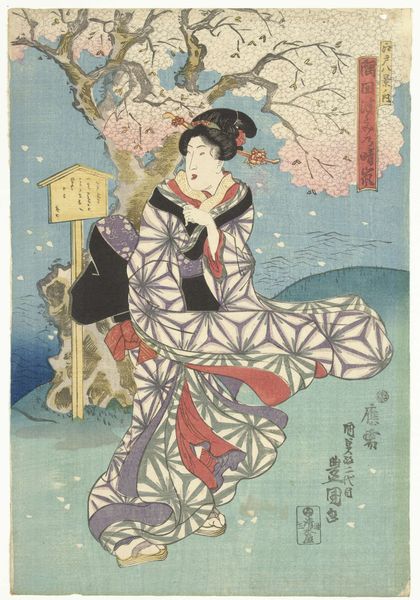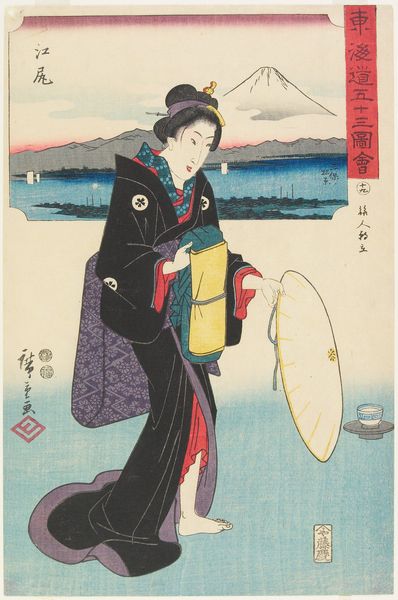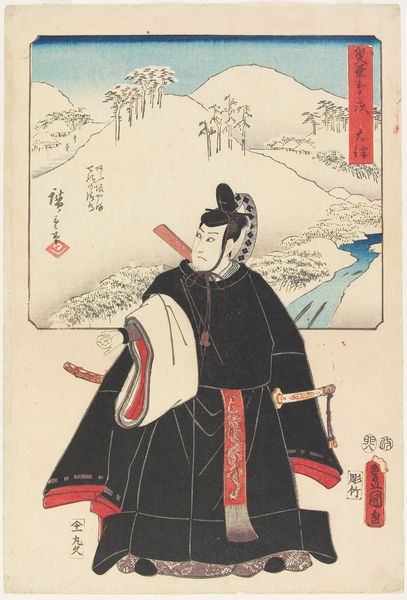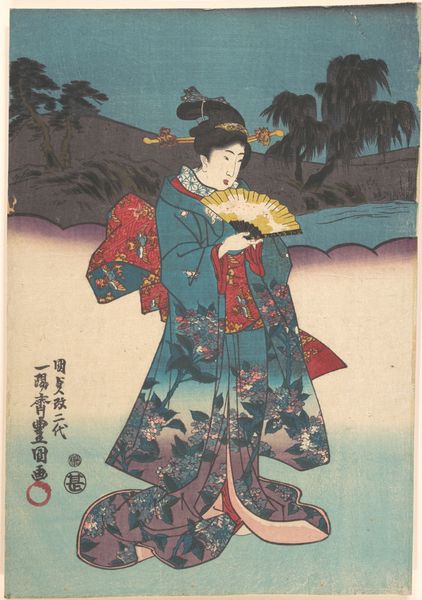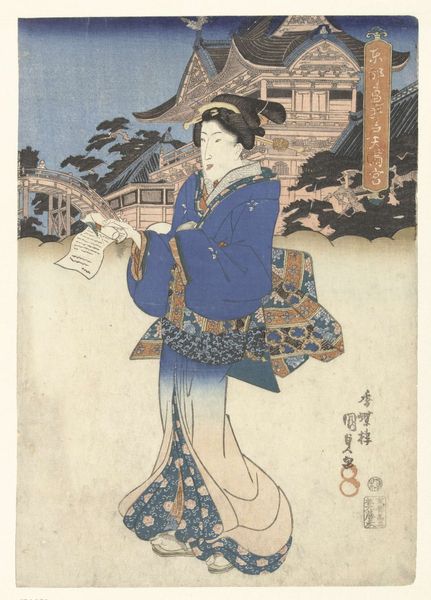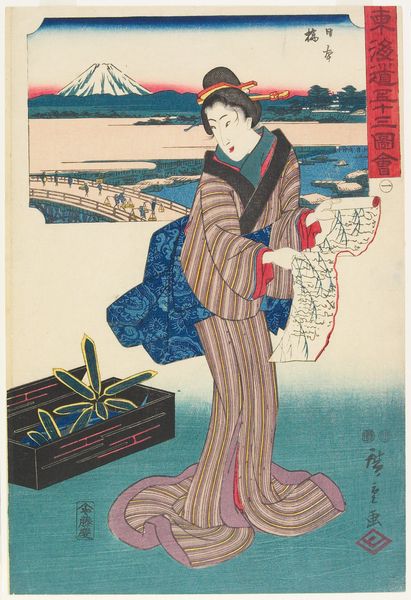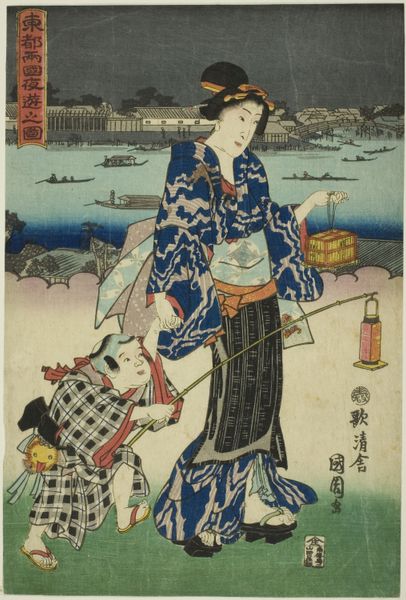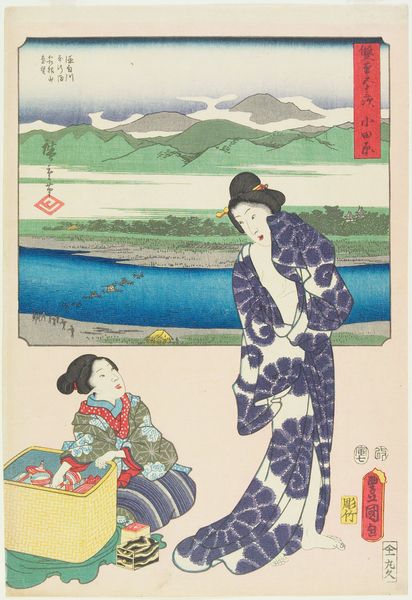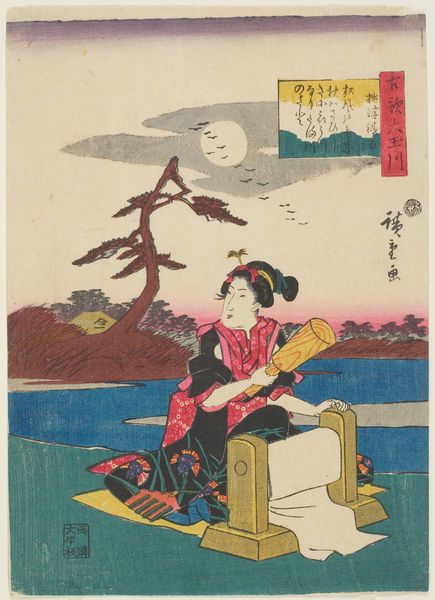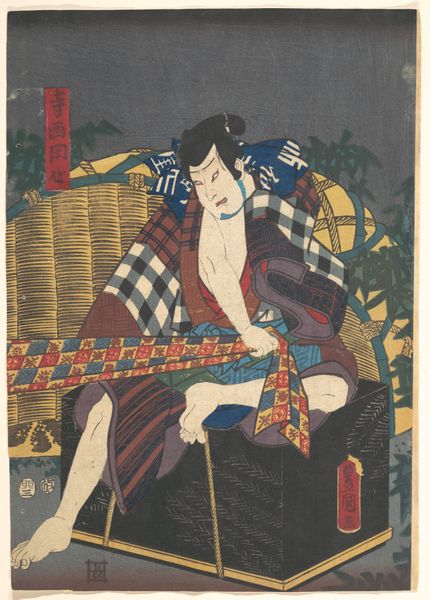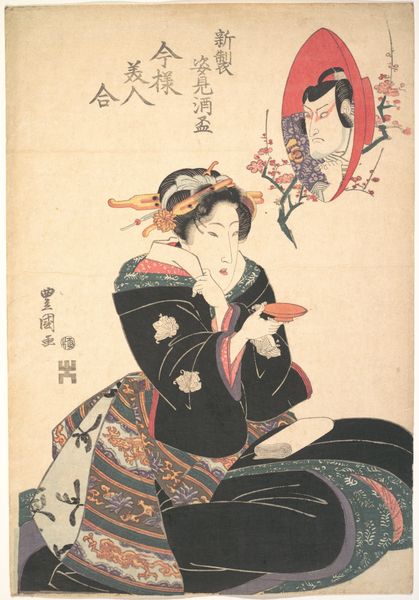
print, ink, woodblock-print
#
portrait
# print
#
asian-art
#
landscape
#
ukiyo-e
#
ink
#
woodblock-print
Dimensions: 14 5/16 x 9 7/16 in. (36.3 x 24 cm) (image)
Copyright: Public Domain
Curator: Look at this beautiful print by Utagawa Hiroshige, created between 1847 and 1852. It's called "Totsuka" and we're lucky to have it here at the Minneapolis Institute of Art. Hiroshige used ink and color on woodblock to create this ukiyo-e landscape. Editor: My first thought is how serene the colors are, a tranquil teal and blue, balanced with the warmer hues of the woman's instrument and clothing. But, even in its serenity, there's a clear division between the figure in the foreground and that majestic, somewhat detached landscape behind her. Curator: Exactly! The ukiyo-e genre, which translates to "pictures of the floating world," was largely preoccupied with precisely this interplay: a grounded individual against a backdrop of fleeting beauty or societal shift. The woman playing the shamisen embodies a cultural snapshot, while the landscape subtly hints at larger, less personal movements of travel and commerce along the Tokaido road. Editor: I see the influence of the Tokugawa era. Woodblock prints were affordable; they allowed ordinary citizens to engage with the world around them. This image speaks to a rising middle class, seeking beauty and escape from daily routine through these accessible landscapes and glimpses into the lives of entertainers. The image feels almost designed to foster a certain level of aspiration, and belonging to the social sphere! Curator: Indeed. The figure, possibly a courtesan or a musician, becomes a focal point of social fascination, reflective of gender roles and performative labor. Moreover, it intersects with our contemporary dialogues around cultural commodification, class structures, and who gets to shape narratives. Even her posture and her slightly averted gaze invites us, compels us to analyze and maybe question our assumptions. Editor: And let’s remember how distribution and artistic creation also went through important transformations in that time. Hiroshige wouldn't have carved those blocks himself—instead he’d rely on teams of artisans! These works are also part of larger historical contexts around technology, mass media and labor dynamics. Curator: I appreciate the reminder to consider these pieces not just as solitary artistic achievements but collaborative reflections of cultural forces. This contextual awareness, in turn, amplifies the visual stories being shared in those social environments. Editor: This close look shows how profoundly prints were able to democratize representation in their own historical context! Curator: Absolutely. And the ripple effects are still unfolding.
Comments
No comments
Be the first to comment and join the conversation on the ultimate creative platform.
